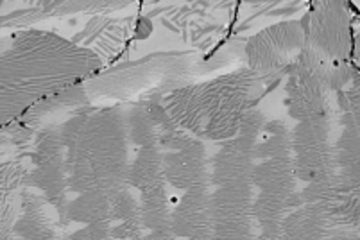All genres
121.
Poster
Dislocation Networks Impede Phonon Transport in PbTe Thermoelectrics. 719. WE-Heraeus-Seminar – Understanding Transport Processes on the Nanoscale for Energy Harvesting Devices, online seminar, Hanau, Germany (accepted)
122.
Poster
Thermoelectric Materials: a methodology for defects – properties correlation. International Workshop on Advanced and In-situ Microscopies of Functional Nanomaterials and Devices, IAMNano, Düsseldorf, Germany (2019)
123.
Poster
Valence EELS investigation on GeSexTe1-x phase change material. EDGE 2017: Enhanced Data Generated by Electrons, 8th International Workshop on Electron Energy Loss Spectroscopy and Related Techniques, Okuma, Okinawa, Japan (2017)
124.
Poster
Combined Atom probe tomography, Electron backscattering diffraction and Transmission electron microscopy experiments of Ag16.7Sb30Te53.3 bulk thermoelectric material. MSE 2016, Darmstadt, Germany (2016)
125.
Poster
Sequential process or co-evaporation: Comparison of IVT and admittance data. 5th European Kesterite Workshop 2015, Tallinn, Estonia (2014)
126.
Poster
Atomic scale investigation of the p-n Junction in CIGS based solar cells: correlation between cell efficiency and impurities. E-MRS 2014, Lille, France (2014)
127.
Poster
Atom probe study of Cu2ZnSnSe4 thin-films for photovoltaic applications. European APT Workshop 2013, Zurich, Switzerland (2013)
128.
Poster
Characterization of Cu(In,Ga)Se2 grain boundaries using atom probe tomography. 2013 MRS Spring Meeting & Exhibit, San Francisco, CA, USA (2013)
129.
Poster
Atomic-scale analysis of the p-n junction in CI(G)S thin-film solar cells. Euromat 2011, Montpellier, France (2011)
130.
Teaching
Sustainable Materials Science and Green Metallurgy (Sustainable Materials and Metallurgical Science & Engineering). Lecture: SS 2021, RWTH Aachen University, 2021-04 - 2021-07
131.
Teaching
Atom Probe Tomography. Lecture: International Workshop VI MiCoTFSC, Berlin, Germany, October 14, 2013 - October 18, 2013











